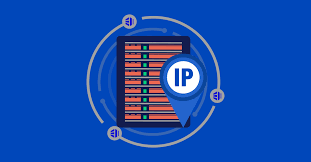In computer networking, IP addressing is a key part of how devices communicate with each other. Every device connected to a network is given a unique IP address, allowing it to send and receive data. These addresses are either public or private, and knowing the difference is essential for setting up secure and efficient networks. This blog will focus on IPv4 private address ranges, how they are structured, where they are used, and the limits they come with. Understanding these details helps network professionals and everyday users manage their systems better and avoid common problems in network setups.
What Are IPv4 Private Address Ranges?
A special set of addresses which are used in local networks is known as the private IP addresses. As opposed to the public IPs, they do not appear on the internet. They were developed to enable the preservation of the scarce IPv4 address space and to facilitate the secure home/office/data centre communication.
The expert protocols governing such addresses have been described in RFC 1918, which has a limited number of ranges of IP addresses which are to be used privately. These are 10.0.0.0/8, 172.16.0.0/12 and 192.168.0.0/16.
Public IP allocation is unique as it is assigned by the providers of the internet connection. The use of the same or similar IPs in other networks is viable with private IPs. This renders them necessary in intranet management.
Structure of IPv4 Private Address Ranges
According to RFC 1918, IPv4 private addresses are organised in three blocks. The initial block is 10.0.0.010.255.255.255 (/8), which provides more than 16 million IP addresses with distinct values. The second range, 172.16.0.0 to 172.31.255.255 (/12), has an approximate address range of 1 million. The third range, 192.168.0.0/16, has 65,536 addresses.
Subnetting enables these blocks to be separated into smaller ones, hence management of the networks is facilitated. The CIDR (Classless Inter-Domain Routing) address notation is/8 or /16. This indicates the number of bits used in the network section. It helps in determining the size and structure of any subnet flexibly.
Common Usage Scenarios of Private IPs
Home and Office Networks:
According to the best IPv4 broker, private IPs are utilized in homes and offices to interconnect several devices such as printers, computers, and intelligent gadgets in a local area network. Such a configuration secures devices from external attacks and still enables smooth internal file sharing and communication. It’s economical and helps prevent the utilization of numerous public IP addresses.
Large Enterprises:
For bigger companies, private IP addresses facilitate effective management of thousands of internal devices. Such addresses enable internal communications, data accessibility, and system administration without making sensitive data susceptible to the internet. They allow firms to increase the size of the network without adding more public IPs, maintaining smooth and secure operations.
Data Centres and Cloud Infrastructure:
Private IPs play a crucial role in data centers and cloud computing in managing internal traffic between applications, servers, and storage. Performance and security are enhanced by the fact that the backend systems are separated from the public internet. Cloud providers likewise utilize them in assisting clients in setting up virtual networks by providing high flexibility and control.
NAT (Network Address Translation):
NAT enables devices with private IPs to access the internet using a single public IP. It works by translating private IP addresses into a public IP address for outgoing traffic. This method saves public IP space and adds a layer of security by hiding internal network structures from external users.
Limitations and Challenges of IPv4 Private Addressing
When you buy bulk IPv4 address block, be careful to learn about limitations. While private IPv4 addressing provides security and flexibility, it has constraints. Address conflicts may arise in combining networks with the same private ranges. It is also reliant on NAT for internet access, making some applications such as VoIP or gaming more difficult.
Private IPs are non-routable over the public internet and therefore restrict direct device-to-device communications across networks. Larger private networks may also be challenging to manage in the absence of adequate planning.
IPv4’s address space has also caused overlaps in larger organisations. Such problems demonstrate the increasing imperative for organisations to migrate towards IPv6 for long-term scalability and easier worldwide connectivity.
Future of IPv4 in the Current Internet Landscape
Despite the arrival of IPv6, the idea to purchase IPv4 addresses remains one of the backbones of the modern internet. Most websites, devices, and services still greatly rely on IPv4 thanks to the universal compatibility and long-standing infrastructure.
It supports billions of users through implementations such as NAT, making the internet growth possible despite limiting addresses. IPv4 is ingrained in the networking tools, protocols, and business systems in a way that makes it impossible for a fast replacement.
Its familiarity, cost-effectiveness, and universal support make it unavoidable. Although the adoption of IPv6 is on the rise, IPv4 remains critical in the maintenance of the smooth connection and the support of legacy systems in the modern digital world.
Unlock the Power of IPv4: The Smart Way with IPv4 TradeHub!
Need more IPv4 space for your growing business or cloud infrastructure? IPV4 TradeHub is your trusted partner for IPv4 leasing, buying, and management. With expert support, competitive pricing, and a secure marketplace, we help you scale confidently in an IPv4-limited world.
